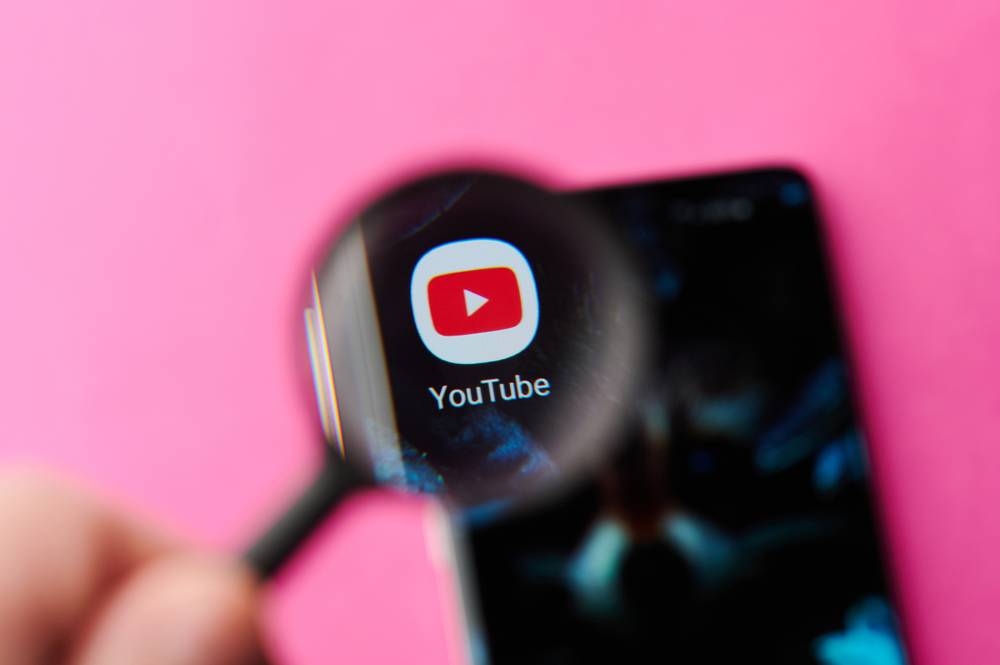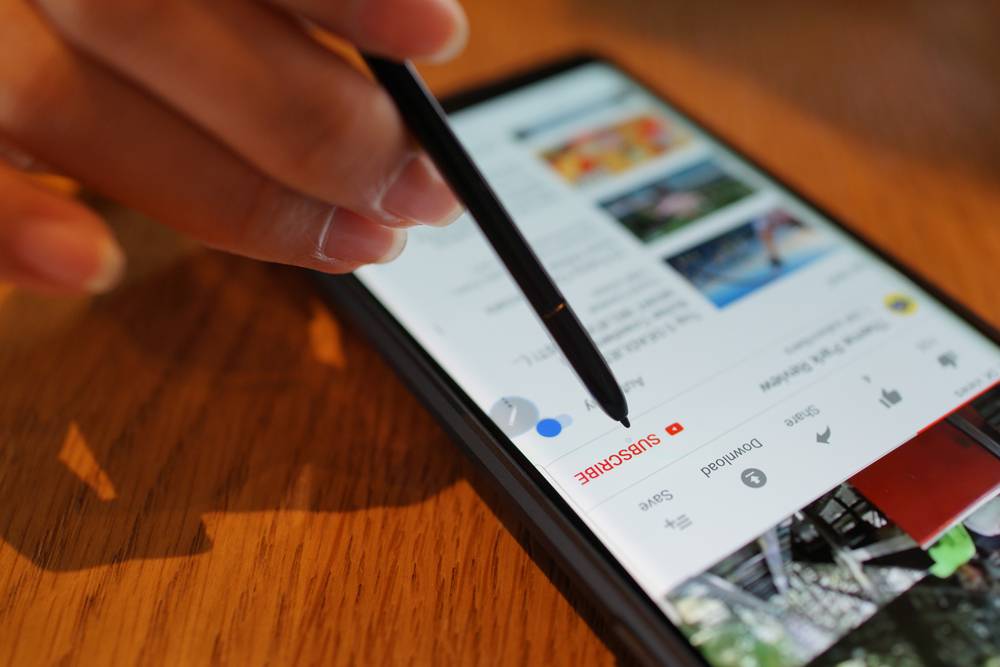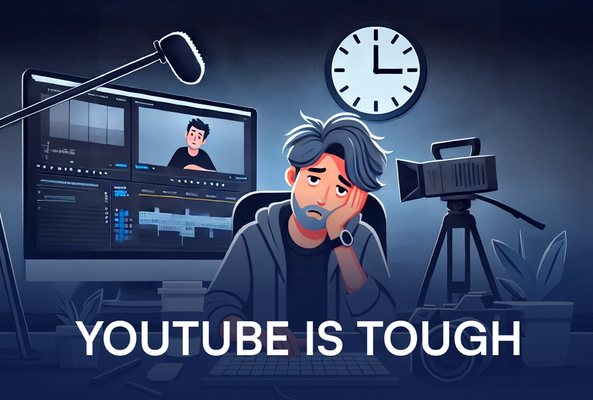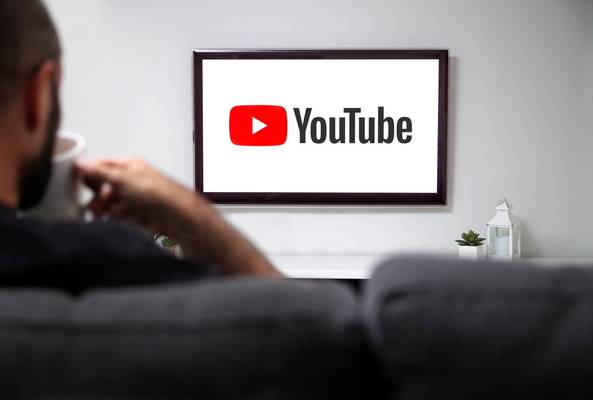Lydia Sweatt is a writer who loves balancing her article/blog time indoors with a healthy dose of nature. She bikes, hikes, and identifies edible plants along the way.
Outdated YouTube Advice You Should Ignore in 2026
In the fast-paced world of YouTube, it’s easy to get caught up in the latest trends and tactics for growing your channel. However, it's important to remember that what worked in the past may not necessarily work in the future. With that in mind, here are 10 pieces of YouTube advice to ignore.
1. Posting Videos Everyday
From the outside, this looks like good advice for creators of all sizes. After all, more videos mean more opportunities to get those numbers up.
While frequent uploads can boost visibility, the 2026 algorithm prioritizes viewer satisfaction and personalized engagement over sheer volume. It's more effective to focus on quality content that resonates with your target audience than to adhere to a daily posting schedule.
Stop Guessing. Start Growing.
Join 20M+ creators using vidIQ to get more views, subscribers, and success on YouTube.

If you're primarily a Shorts creator and do not require long hours for each video, putting out content daily might be doable. Just don’t forget that, even when producing more content more often, it’s important to stay authentic and provide something relevant for your viewers.
2. Replicating Successful YouTubers
Alright, this might sound controversial right off the bat, given that we've encouraged new creators to follow this advice in the past. And it does make sense to do so. But not everyone has the same creative style or is inspired by the same kind of content.
Instead, develop your own style and focus on creating content that reflects your passion and connects with your viewers. While this may sound like a tall order, especially for creators new to YouTube, just remember this: YouTube is a form of storytelling, one that you can master with the right process.
3. Starting a Separate Channel for Your YouTube Shorts

Some creators may worry that mixing long videos with shorter ones will hurt their channel.
That begs the question: If viewers support your Shorts, why would they suddenly want longs? And if they currently like your longs, why would they want Shorts?
Fortunately, that’s a problem you no longer have to worry about. In 2025, YouTube's algorithm effectively integrates both Shorts and long-form content. In other words, there is no need to start a separate channel for YouTube Shorts.
Maintaining a single channel allows for cohesive branding and can enhance audience retention across different content formats.
Read More: YouTube Will Recommend Long-Form Videos to Shorts Viewers [Algorithm Update]
4. Introducing Yourself in Every Video

There’s nothing wrong with saying “hello” at the start of a video, but try not to introduce yourself, your channel, and your niche every time. Once a viewer knows this information, repeating it is pointless.
Instead, lead with the value you promised viewers before they clicked on the video. That could be the main idea or storyline they saw in your title, thumbnail, or video description. After all, that’s what they came to see!
Read More: YouTube Intros - 8 Ways to Hook Viewers In the First 8 Seconds
5. Focusing on YouTube Tags
Many people think they get more views by adding tags to a video, but that’s not how they work. Tags help people find your content, especially if the topic is frequently misspelled.
“Tomatoes” is a good example. Many people leave the E out by typing “tomatos,” so if you’re video is about growing that vegetable, you can add the common misspelling (tomatos) as a tag.
Overall, tags play a minimal role in boosting your views. The video title, description, and thumbnail are most important for video discovery, according to YouTube.

6. Only Making Videos for YouTube Search

People discover videos in many parts of the YouTube app or website. Search pages are just one of those places, so you don’t need to prioritize them over everywhere else.
Your video might appear in…
- Browse features
- Suggested videos
- Channel pages
- Subscriber notifications
- Playlists
- End screens
- Direct traffic
- External traffic
- YouTube advertising
- Other YouTube features
So if you’re only making search-based videos that rely on keywords, you’re missing out on tons of views. We know this because 70% of views on YouTube come from video recommendations!
That means it’s better to make videos that complement the popular, viral content within your niche (so YouTube recommends your video next).
7. Trying to Go Viral too Soon

Going viral on YouTube comes with many benefits, like attracting new viewers and boosting your confidence as a creator.
But no one talks about how these benefits turn into setbacks for creators who aren’t used to going viral. They could spend months trying to chase that high again, all while targeting the wrong audience and burning out creatively.
That’s why going viral on YouTube is overrated. Here are the main reasons:
- Going viral is addictive — a pressure you don’t need this early.
- The views don't always come from your “real” audience.
- Sometimes, going viral comes with criticism.
- Some viral trends/challenges are risky.
- Going viral skews your perception of quantity vs. quality.
- You think less about your audience and more about yourself.
Focus on building a loyal viewer base through consistent, high-quality content tailored to your niche.
8. Doing ‘Sub4Sub’ to Get More Subscribers

Sub4Sub is when two creators subscribe to one another’s channel to boost their overall subscriber count. It sounds harmless enough, but this is the worst thing you can do for two reasons:
- It doesn’t work long-term.
- It’s against YouTube’s Terms of Service.
According to YouTube, you’re not allowed to “cause or encourage any inaccurate measurements of genuine user engagement with the service, including by paying people or providing them with incentives to increase a video’s views, likes, or dislikes, or to increase a channel’s subscribers…”
Violating YouTube's policies can result in penalties. Instead, engage with your audience authentically to grow your subscriber base organically.
9. Making Videos for the YouTube Algorithm and Not Your Audience

Some creators are obsessed with beating the YouTube algorithm. They want to know all of the tips and tricks to make a video rank high and get millions of views.
Of course, there’s no “beating” the YouTube algorithm because the algorithm isn’t working against anyone or anything. Its only job is matching viewers to the right videos.
If you know your audience well, just make videos they want to see! That allows the YouTube algorithm, or more accurately, the recommendation system, to serve that content to your viewers.
Read More: 5 Secrets You Didn’t Know About the YouTube Algorithm
10. Not Seeking Brand Deals as a Small Creator

There’s a misconception that small creators can’t make money on YouTube, let alone get brand deals. But guess what? You don’t need millions of subscribers to show a brand you’re worth the money. Your proof is an audience that takes action when you ask them to, like when they download an ebook or smash the like button.
If you can show that type of engagement, the next step is reaching out to brands aligned with your channel’s focus. You’ll want to create a media kit first, then pitch some ideas around how you would advertise their latest product or service.
Be Careful with Outdated YouTube Advice
By aligning your content strategy with these updated insights, you can navigate YouTube's evolving landscape more effectively in 2026. But remember: YouTube is a growing, evolving platform. What may be good advice today may be dangerous tomorrow. Make sure you’re staying on top of what tactics work to grow your following!
Want more details? This video explains more about the worst YouTube advice to ignore.
20k+ 5 Star Reviews
Ready to put this into action?
Use vidIQ to find your next video idea, pick better keywords, and optimize every upload.






